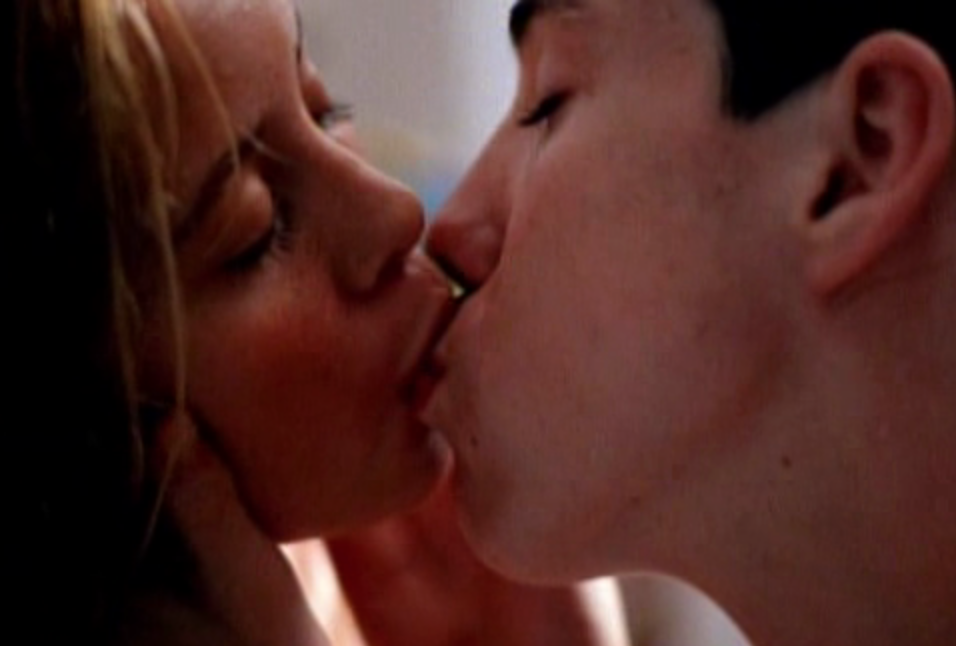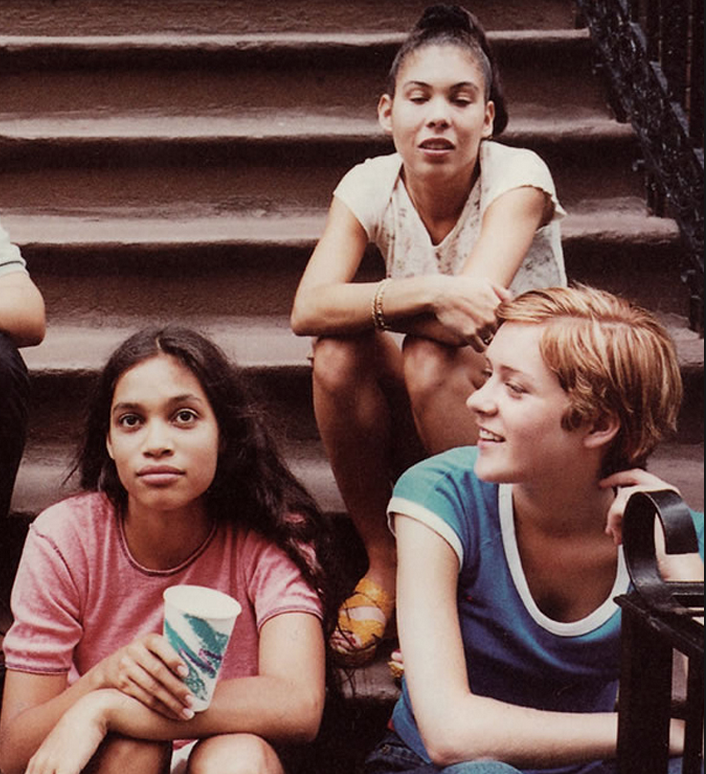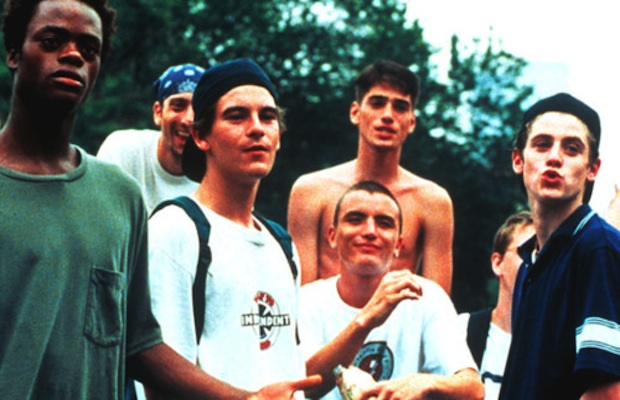 It begins with a pair of half-clad teenagers making out, which is a conventional enough opening for a coming-of-age film. But these two look awkward rather than polished – the girl is barely pubescent, the guy is drowning in his big-boy boxers – and they’re going at it like guppies swallowing each other or cannibals mawing their last meal. The shot is not Hollywood sexy; it’s nasty, nothing you’d see in the too-cool-for-school movies about adolescents today. Welcome to “Kids,” the landmark film about New York City teenagers, which is celebrating its twentieth anniversary this spring. (Yes, we’re that old.)
It begins with a pair of half-clad teenagers making out, which is a conventional enough opening for a coming-of-age film. But these two look awkward rather than polished – the girl is barely pubescent, the guy is drowning in his big-boy boxers – and they’re going at it like guppies swallowing each other or cannibals mawing their last meal. The shot is not Hollywood sexy; it’s nasty, nothing you’d see in the too-cool-for-school movies about adolescents today. Welcome to “Kids,” the landmark film about New York City teenagers, which is celebrating its twentieth anniversary this spring. (Yes, we’re that old.)
Sprawling and unrepentant, “Kids” isn’t so much a study; it’s more a ninety-minute panoramic photograph, which is appropriate since it’s the first (and best) film by photographer Larry Clark. It also boasts the first screenplay by Harmony Korine, who went on to direct such jaw-slackers as “Gummo” (1997) and the neon-reactionary, pseudo-feminist “Spring Breakers” (2012). Between Korine and Clark, who has cited lower Manhattan’s male skateboarders as his chief inspiration, this is hardly an anthem of female liberation, though it adjacently highlights the need for young women’s rights, and debuts Rosario Dawson and Chloë Sevigny, both of whom then prevailed as It Girls of Manhattan’s Lower East Side. (The latter girl was still technically a “Metro North queen” who lived in her parents’ tony Connecticut home).
Sevigny stars as the sad-eyed, pixie-haired Jennie, who contracts the HIV virus when she loses her virginity to Telly (Leo Fitzpatrick), a jive-talking, scrawny-chested Lothario with a mean streak the size of the MTA. Over the course of one very long day and night, Jennie receives her diagnosis and then hunts down the boy, who’s bedding every pretty virgin in town in between swilling forties with his posse. That’s the plot, and I use the term loosely.  Mostly, “Kids” is a collage of drugging, drinking, fucking, gay-bashing, race-baiting, and endless bragging, as packs of these teenaged wolves roam the city with no adult intervention.
Mostly, “Kids” is a collage of drugging, drinking, fucking, gay-bashing, race-baiting, and endless bragging, as packs of these teenaged wolves roam the city with no adult intervention.
Clark’s brand of cinéma vérité may be opportunistic, even brutally voyeuristic, but his bravado is irresistible – just like the nineties, now that we look back at them with 20/20 hindsight. For “Kids” captures what may very well be the last time people didn’t and couldn’t easily document every waking minute, when we had to work to find each other, not to mention shtup each other. It was the last time we ogled the people around us rather than our phones; when 1960s radicalism hung in the air as a cultural mandate rather than as a stylistic reference; when we relied on the voluptuous anonymity of city life and the subjectivity of human memory to cloak our bad behavior. Texting, YouTube, FaceTime, Tinder, geo-located tweets, smartphones, and even regular emailing were still years away.
That level of insouciance is apparent in each frame. We can hear it in the ramshackle soundtrack by grunge king Lou Barlow and in the un-self-conscious way these kids smack gum and talk smack. We can see it in how they crowd the litter-strewn streets, the graffitied subways, the claustrophobic apartments. We can see it when they steal beers without worrying about surveillance cameras, and in their poreless, entwined limbs jiggling with a cocktail of hormones untamed by the prescription drugs now dampening our young people. Like a low-rent Robert Mapplethorpe or Andy Warhol art installation, scenes teem with sweat, ugly overhead light, and neurotic, erotic tension. Traumas happen in real time with no processing or postulating. No one can find each other except by chance or word of mouth. The boys are animals; the girls are sleepy-eyed marks; the grownups are deli owners from the old country and African-American legless beggars wearing “Kiss Me I’m Polish” tee shirts. Sixteen-year-old dudes with peach-perfect asses piss in toilets while their buddies loll in bathtubs, smoking joints and laughing. Chicas boast that their lips are busted from sex and weep alone in cabs. The world is one big mix tape – staticky, cacophonous, and pouring out of what we used to call ghetto blasters.
Less reflective than merely mirroring, this film is wildly uncommunicative on every level. Oddly, that’s its truest charm. I’d call it seminal except there’s been nothing like it since. We thought it was anticipating our future – a crime-ridden, STD-laden urban dystopia. In fact, it was the swan song of a New York City – messy, spontaneous, affordable, mysterious, tantalizingly wicked and alive – that was about to disappear. Gorgeously flawed, “Kids” is the time capsule we never thought we’d need.
This was originally published in Word and Film.
